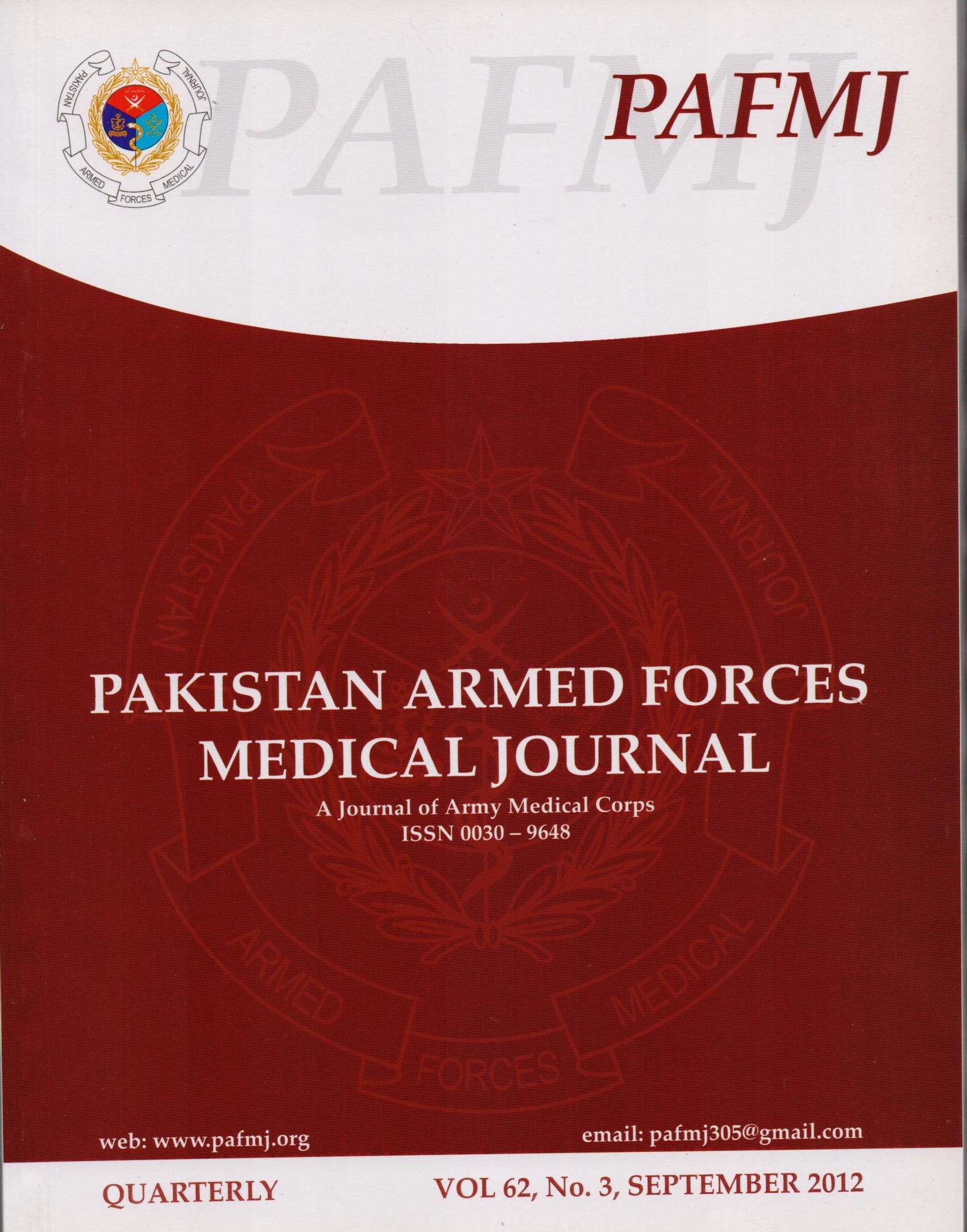FREQUENCY OF DYSLIPIDAEMIA IN YOUNG PATIENTS WITH ACUTE MYOCARDIAL INFARCTION
Frequency of Dyslipidaemia
Abstract
Objective: To study the frequency of dyslipidaemia in young patients aged between 20-40 years, with Acute Myocardial Infarction in our population.
Study design: Descriptive study
Place and duration of Study: Coronary Care Unit (CCU) of Armed Forces Institute of Cardiology (AFIC)/ National Institute of Heart Diseases (NIHD), Rawalpindi from December 2008 to May 2009.
Subjects and Methods: One hundred patients of acute myocardial infarction (AMI) fulfilling the World Health Organization (WHO) diagnostic criteria of AMI, having ages between 20-40 years, were included in the study after full informed consent using non-probability consecutive sampling. Blood samples for serum lipid profile were taken after 12 hours fasting (within 24 hours of presentation), and analyzed in laboratory of AFIC. Individual patients’ results were compiled with respect to age, gender, serum total cholesterol, serum triglycerides, serum low density lipoprotein (LDL) cholesterol, serum very low density lipoprotein (VLDL) cholesterol and serum high density lipoprotein (HDL) cholesterol. The data was entered in SPSS (version 11.0) and analyzed.
Results: Of the 100 patients with AMI, 47 were found to have dyslipidaemia. Hypertriglyceridaemia was the most common lipid abnormality as it was found in 32 (68.1%) patients; followed by raised serum VLDL, hypercholesterolemia, raised serum LDL and low serum HDL found in 25 (53.2%), 16 (34.0%), 4 (8.5%) and 2 (4.3%) patients respectively. Out of 47 patients with dyslipidaemia, 28 (59.6%) had more than one lipid abnormality.
Conclusion: Frequency of dyslipidaemia in young patients with AMI in our population is high.











